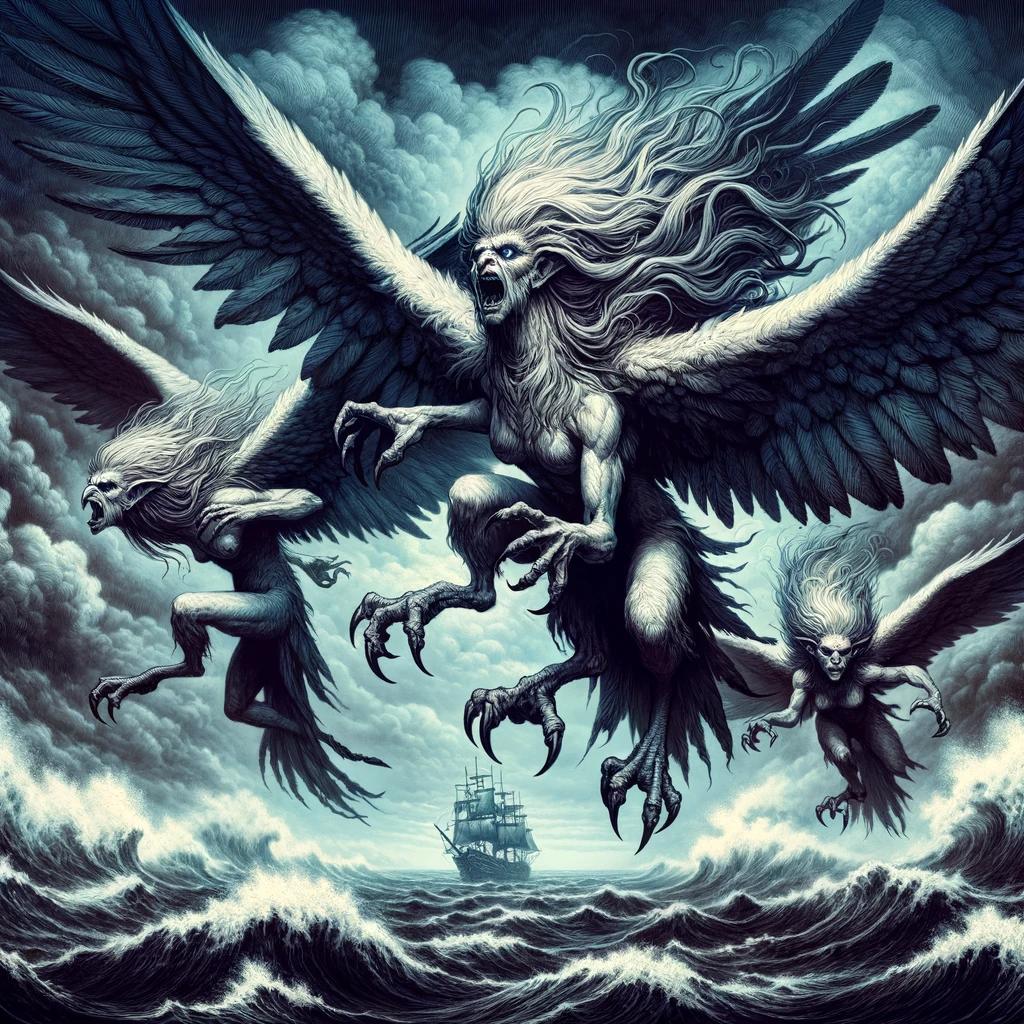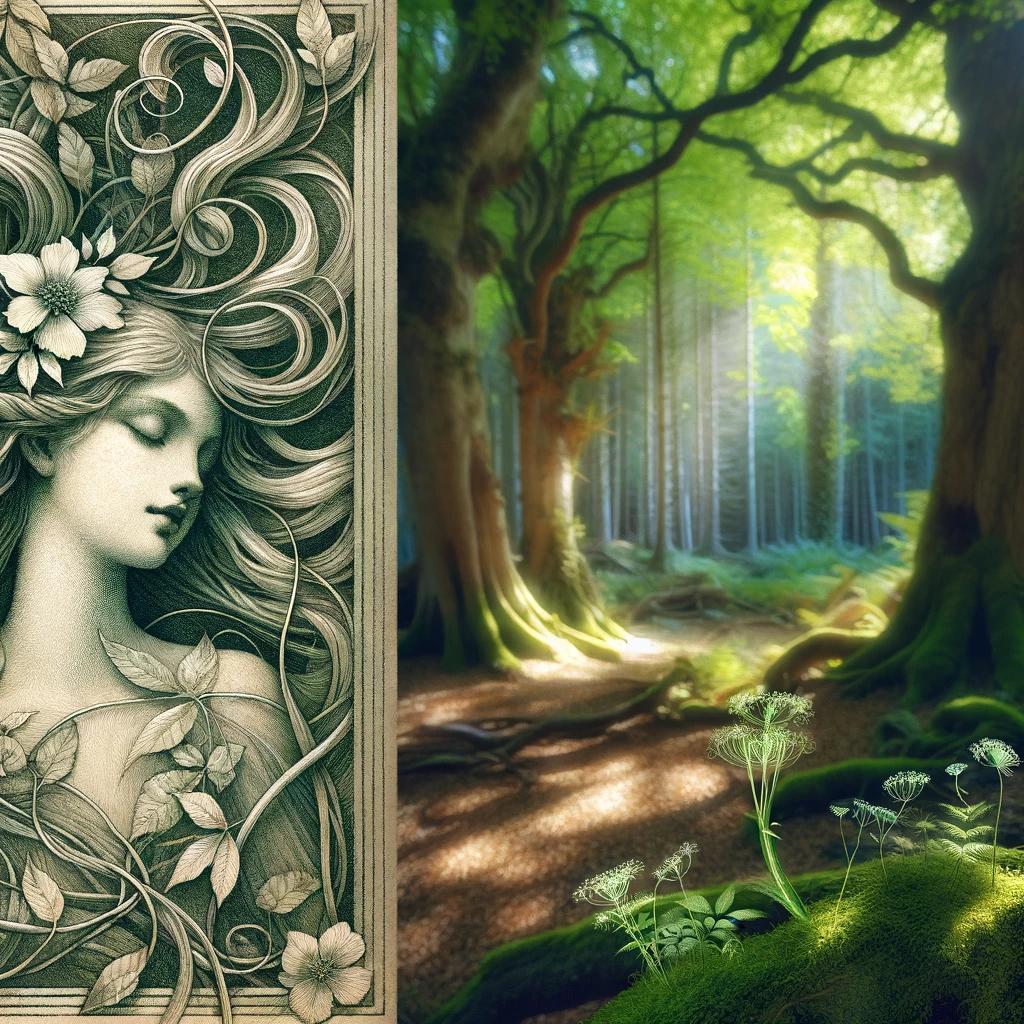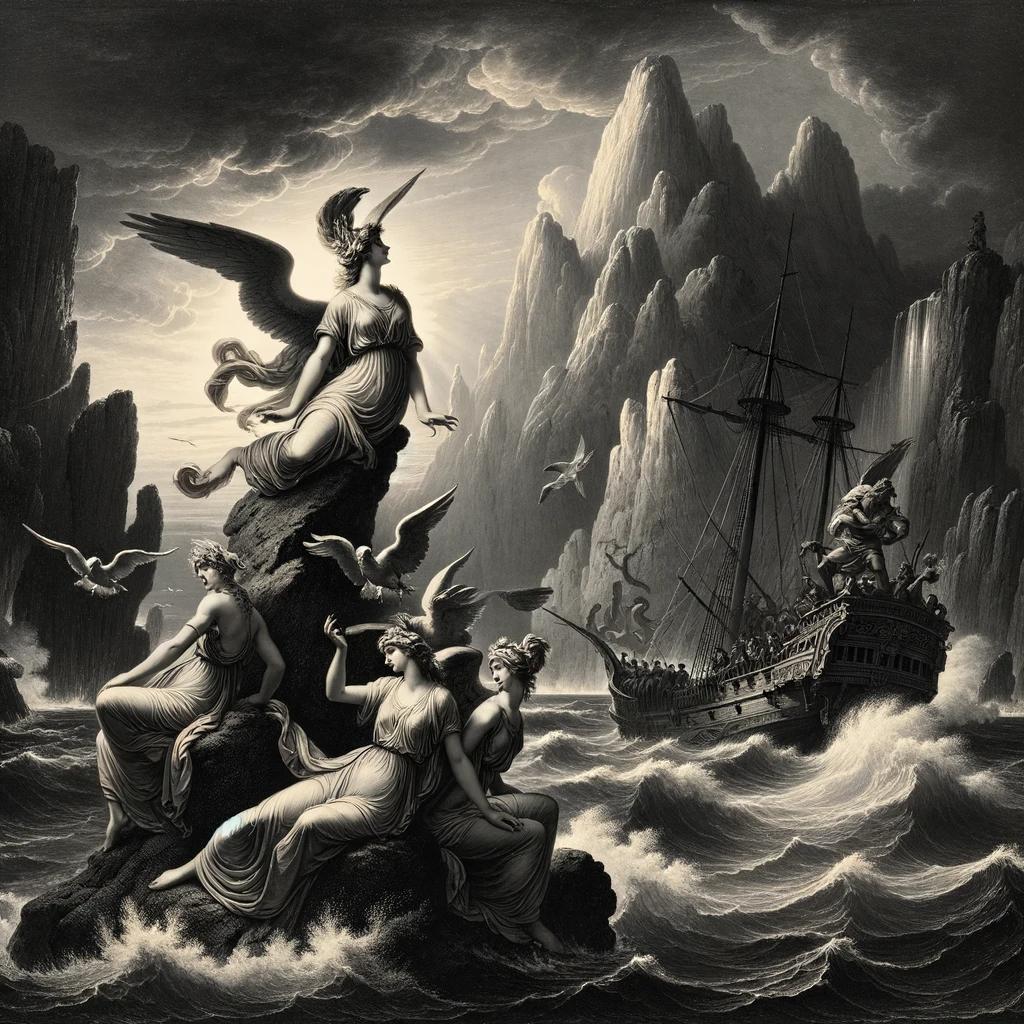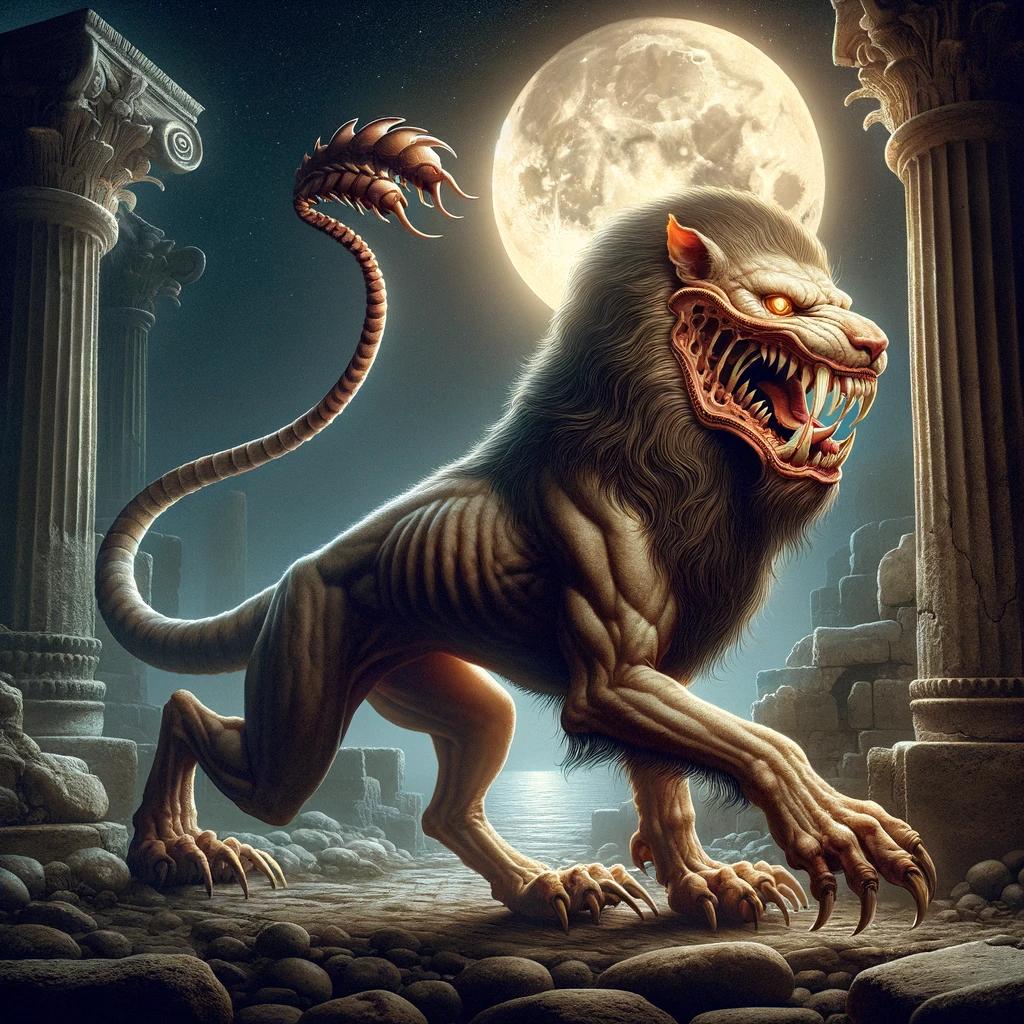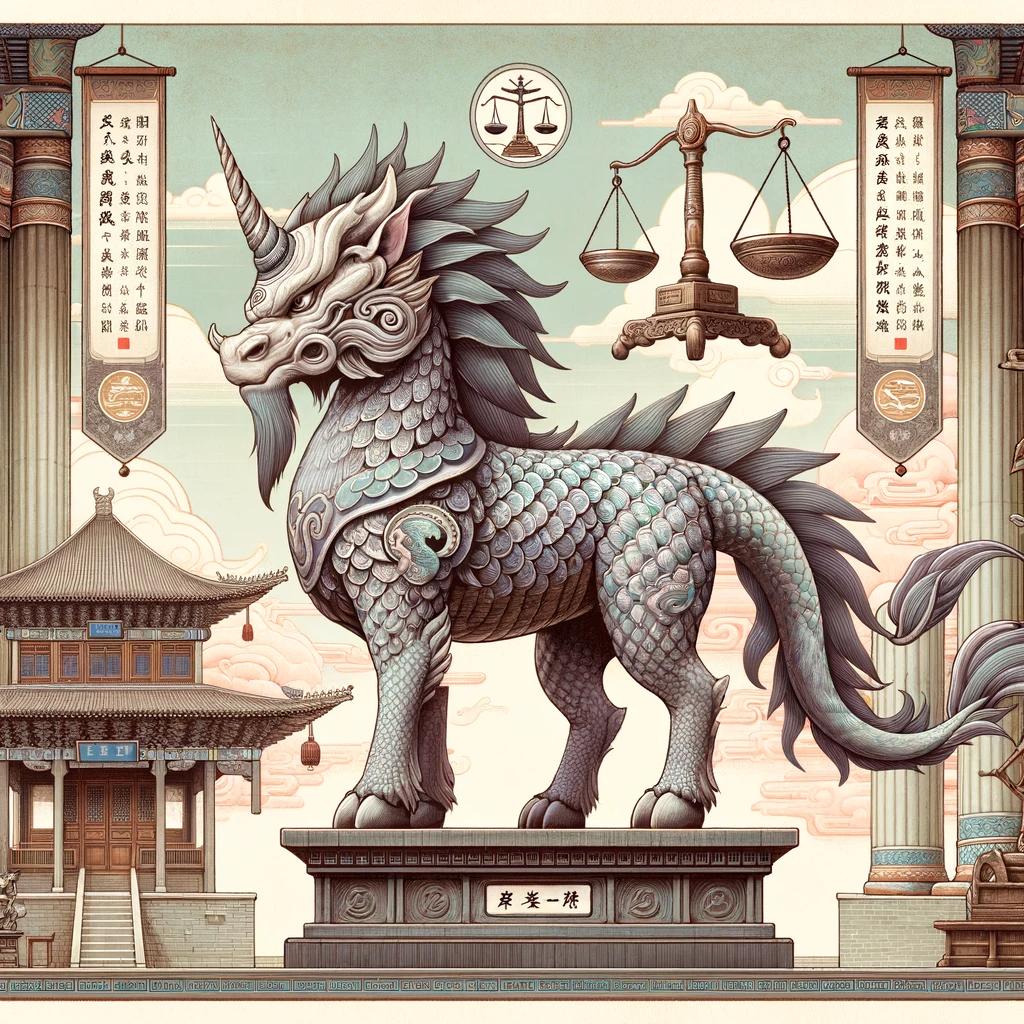The Majestic Phoenix: A Symbol of Rebirth and Immortality
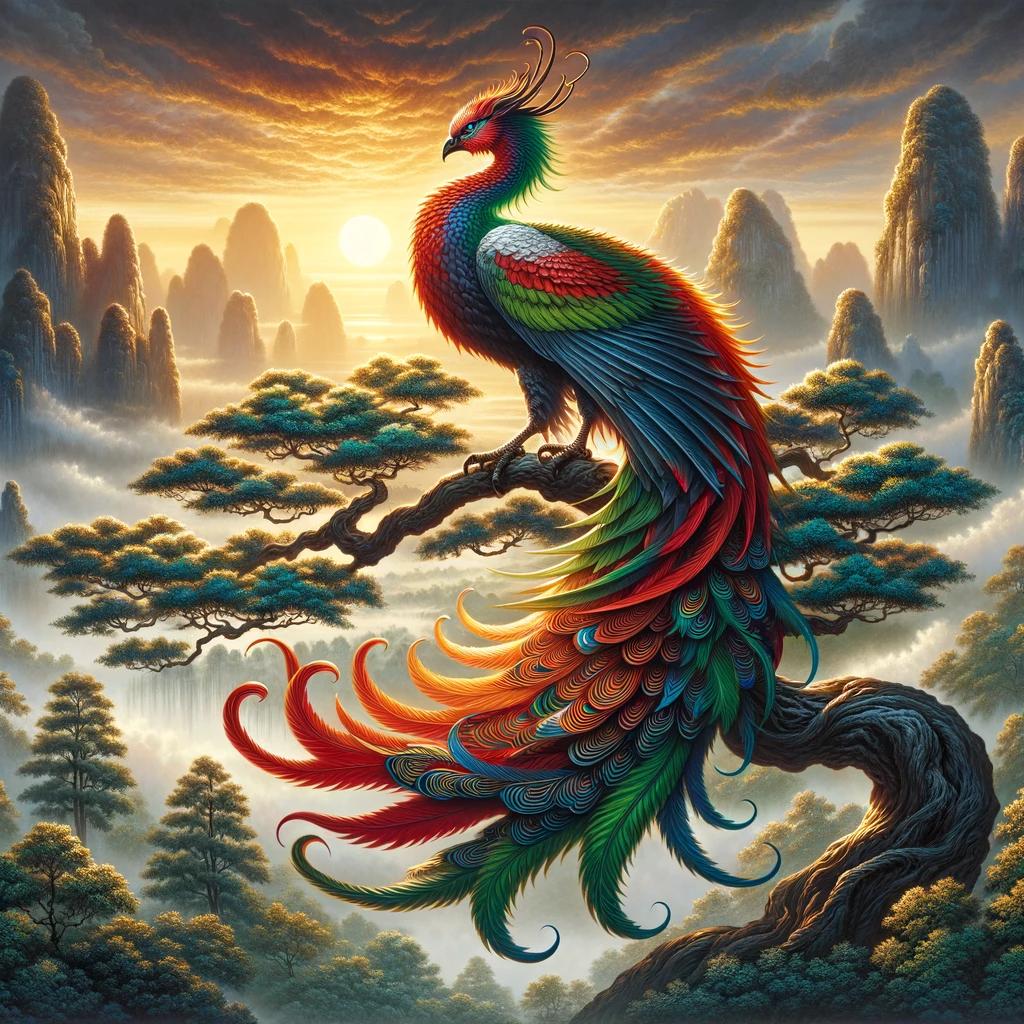
The Phoenix in Greek mythology holds a captivating allure, symbolizing renewal and immortality. This ancient mythical creature, often depicted as a magnificent bird engulfed in flames, has left its profound mark in various aspects of Greek culture, literature, and art.
The phoenix bird meaning, intertwined with themes of rebirth and eternal life, draws heavily on its mythical powers and vibrant phoenix colors in mythology.
With possible influences from Egyptian mythology, the Phoenix, or the mythical phoenix as some texts refer to it, is often associated with the sun and exhibits cyclic life patterns, embodying the essence of fire and regeneration.
Its significance, interpretations, and even its existence in real life remain subjects of fascination and debate. Among the most famous phoenix in mythology, this bird, revered across cultures, symbolizes the eternal cycle of life and death, with stories of the phoenix bird powers captivating audiences for generations.
From ancient texts to modern adaptations, the Phoenix continues to inspire and intrigue, making it a captivating topic to explore.
Overview of Phoenix Greek Mythology
The Phoenix Greek mythology is a captivating and ancient legend that has fascinated people for centuries. As one of the most iconic creatures in Greek mythology, the Phoenix is a legendary bird that possesses the power of immortality, often associated with the phoenix god in some stories.
According to the mythology, the Phoenix is said to be born from its ashes, symbolizing rebirth and renewal, a cycle that repeats every hundred years. This bird, embodying the phoenix mythology powers, is a testament to the enduring nature of spirit and the possibility of being born again into a new life.
The mythology surrounding the Phoenix is rich and varied, with different versions and interpretations found throughout Greek literature and art. The bird is often associated with the sun, representing the cycle of life and the eternal nature of the universe.
Its mythical existence and symbolism have influenced various cultures and civilizations throughout history, including the Egyptian and the Chinese cultures.
In ancient Greek culture, the Phoenix was revered as a symbol of divine presence and providence.
It was believed to possess the ability to bring good fortune and protection. The story of the Phoenix is intertwined with themes of sacrifice, regeneration, and the triumph of life over death, echoing the phoenix bird mythology that has inspired countless tales and artworks.
Throughout the ages, the Phoenix myth has been explored and adapted in different forms of artistic expression. From its connections to the Egyptian mythology, where the bird was associated with the sun god, to its portrayal in classical texts and depictions in art, the Phoenix has left an indelible mark on human imagination and creativity.
The Elder Pliny’s writings even mention the Phoenix, highlighting its significance in ancient thought and belief.
Moreover, the Phoenix myth has transcended its ancient roots and continues to hold significance in contemporary society.
It has found its way into modern literature, movies, and popular culture, captivating audiences worldwide and keeping the legend alive.
In conclusion, the Phoenix Greek mythology is a captivating and enduring legend that symbolizes rebirth, renewal, and the eternal cycle of life.
Its significance and influence can be traced throughout history and continue to inspire fascination and awe in people today.
The Symbolism of the Phoenix Bird in Ancient Greek Culture
This symbolism was tied to the cyclic nature of life, emphasizing the hope and possibility of new beginnings.
Its longevity, often counted in hundreds of years, symbolized the eternal nature of the soul and the essence of divinity.
This characteristic represented the ability to overcome challenges and rise above adversity.
Its fiery plumage symbolized the illumination of truth and the pursuit of higher wisdom.
Its presence was believed to bring about restoration and the revitalization of life forces.
It was believed to soar across the sky, embodying the power of the sun and its life-giving energy.
This duality highlighted its spiritual significance and its ability to transcend earthly limitations.
The symbolism of the Phoenix in ancient Greek culture brought forth profound interpretations and influenced various aspects of society, including art, literature, and spiritual beliefs.
The enduring allure of this sacred bird continues to captivate people’s imagination even in the modern era.
Exploring the Origins and History of the Phoenix Mythology
The origins and history of the Phoenix mythology are deeply rooted in ancient civilizations and mythologies. This intriguing creature, celebrated among the Egyptians and Greeks alike, has captured the imaginations of people throughout history, leaving its mark on various cultures worldwide.
The phoenix, a symbol of fire and divinity, dies and is born again, rising from its ashes in a cycle that captures the essence of life and rebirth. Its story is a testament to the enduring power of myth and its capacity to inspire across ages and civilizations.
1. Early Egyptian Influence:
The concept of the Phoenix can be traced back to ancient Egypt, where the bird was known as the ‘Bennu’. Depicted as a heron or a stork-like bird, the Bennu symbolized rebirth and resurrection, similar to the sacred bird called the Phoenix in Greek mythology.
This bird does indeed capture the imagination, embodying the cycle of death and rebirth from its ashes.
2. Mesopotamian Connections:
The Phoenix myth also finds connections in Mesopotamian cultures, particularly in Sumerian and Babylonian mythology.
Here, it was associated with the legendary bird called the ‘Anzu’, often linked to the sun god or symbolizing divine judgment and wisdom. Another sacred bird in these tales, the Anzu, shares similarities with the Phoenix, which does not succumb to death in a conventional sense but rises anew from its ashes.
According to Greek tales, the Phoenix was a magnificent bird that possessed extraordinary powers of resurrection and immortality. This great rarity even in Greek myths, the Phoenix exemplifies the eternal cycle of life, death, and rebirth.
4. Symbol of Immortality:
In Greek mythology, the Phoenix was said to have a lifespan of hundreds of years. At the end of its life cycle, the bird would build a nest of aromatic woods and set it ablaze, only to rise from the ashes as a young and vibrant Phoenix, symbolizing eternal life and regeneration.
This dramatic transformation into flames and subsequent rebirth from its ashes is what this bird does which does not compare to any other mythical creature.
5. Influence on Greek Culture:
The symbolism of the Phoenix resonated deeply with the ancient Greeks, inspiring artistic and literary works.
It appeared in various Greek literary texts, including the epic poem “The Iliad” by Homer and “Metamorphoses” by Ovid, solidifying its place in Greek culture. The story of the Phoenix, a bird that rises all the way from its ashes to begin its life anew, has also found its way into early Christian symbolism, representing the resurrection and the promise of eternal life.
6. Continuity in Roman Mythology:
With the influence of Greek culture on the Romans, the Phoenix myth continued to thrive in Roman mythology. It became associated with the sun god, Sol, and often represented the cycle of life, death, and rebirth.
This mythical creature, a phoenix, symbolizes not just the sun but also the magic and wonder inherent in the cycles of nature. Its vibrant colors, often depicted in art and literature, reflect the phoenix’s association with fire and regeneration.
7. Influence Beyond Ancient Times:
The Phoenix myth has not been confined to ancient civilizations alone. Its symbolism and allure have persisted throughout history, finding its way into various cultural expressions, literature, and art forms across different periods and regions.
For example, in the Harry Potter series, the phoenix plays a pivotal role, embodying themes of loyalty, renewal, and the power of love.
As we delve deeper into the origins and history of the Phoenix mythology, we discover the profound impact this mystical bird has had on the collective human imagination, leaving an enduring legacy that continues to captivate us even in modern times.
They tell us that when the old phoenix dies, its body ignites into flames, and from the ashes, a new phoenix arises, reborn, rejuvenated, and ready to live again for many years and cycles.
The Phoenix in Ancient Egyptian Mythology: Connections and Influences
The legend of the Phoenix, an immortal bird associated with resurrection and rebirth, transcended not only Greek mythology but also found its echoes in the ancient Egyptian culture. In ancient Egypt, the bird was known as the Bennu, resembling a heron or a crane with its long legs and graceful appearance.
While the Phoenix and the Bennu share remarkable similarities, it is important to note that they are distinct figures from different mythologies.
The Bennu held great significance in Egyptian mythology and was closely associated with the sun god Ra.
In fact, the Bennu was believed to be Ra’s soul and often depicted perching on the sacred Benben stone, a symbol of creation and the primordial mound. Just like the Phoenix, the Bennu was a powerful symbol of renewal and rejuvenation, embodying the daily rising of the sun and the eternal cycle of life and death.
Interestingly, the intertwining of the Phoenix and the Bennu in ancient mythology suggests potential cross-cultural influences. It is plausible that ideas and beliefs from Greek and Egyptian civilizations influenced each other, resulting in the similarities between their respective mythologies.
The presence of the Phoenix in ancient Egyptian mythology indicates the interconnectedness of ancient cultures and the universality of certain mythological concepts.
While the exact origins of the Phoenix myth in ancient Egypt remain unclear, the enduring belief in the immortality and transformative nature of this mythical bird is evident.
The symbolism and associations of the Phoenix and the Bennu in their respective mythologies provide a captivating glimpse into the human fascination with eternal life and the cycle of death and rebirth.
The Phoenix in Literature and Its Representation in Classical Texts
The mesmerizing tale of the Phoenix has captivated the minds of countless writers throughout history, leading to its prominent presence in various literary works. In classical texts, the Phoenix is often portrayed as a symbol of resilience, rebirth, and transcendence.
Its legacy stretches from the ancient texts of Greek mythology, where the phoenix signifies the unending cycle of life and death, to modern narratives that explore the phoenix’s themes of magic and rebirth.
In Greek mythology, the Phoenix appears in several renowned pieces of literature:
- The Iliad: In Homer’s epic poem, the Phoenix is mentioned as a companion of King Priam during the Trojan War, known for its longevity and association with the sun.
- Herodotus’ Histories: The ancient historian tells the story of the Phoenix, describing its cyclical life and its journey to the temple of the sun in Heliopolis, Egypt.
- Ovid’s Metamorphoses: Ovid’s work explores various mythical transformations, and the Phoenix makes a notable appearance, emphasizing its mythical characteristics and its ability to rise from its own ashes.
These classical texts provide different perspectives on the Phoenix, highlighting its symbolic significance in ancient Greek culture.
The Phoenix serves as a metaphor for immortality, resurrection, and the cyclical nature of life.
The motif of the Phoenix has also transcended Greek literature and found its way into other classical texts from different cultures.
For example:
- In Egyptian mythology, the Phoenix, known as the Bennu bird, is prominently featured in texts such as the Book of the Dead, representing the soul’s journey in the afterlife.
- In Roman mythology, the Phoenix appears in Virgil’s Aeneid, symbolizing the fall and rebirth of the city of Troy.
Moreover, the concept of the Phoenix bird has inspired countless poets, including Shakespeare, who drew upon its symbolism of transformation and renewal in his plays and sonnets.
From ancient epics to revered works of literature, the Phoenix’s representation in classical texts underscores its enduring appeal and symbolic significance across cultures and time periods.
Phoenix and the Sun: An Examination of the Solar Associations
The connection between the Phoenix and the sun is a captivating aspect of Greek mythology.
In ancient Greek culture, the Phoenix was often associated with the sun, representing the eternal cycle of life and death. This association is deeply rooted in the belief that the sun is a source of life, warmth, and light, and the Phoenix, with its ability to rise from its own ashes, symbolizes the sun’s daily journey across the sky.
The Phoenix’s mythical ability to be reborn from its own ashes aligns with the idea of the sun rising and setting each day. Just as the sun disappears below the horizon at night and emerges again in the morning, the Phoenix undergoes a cycle of death and rebirth.
This parallel reinforces the connection between the bird and the sun, emphasizing their shared symbolism of renewal and immortality.
Ancient Greek texts often depict the Phoenix as a radiant bird, adorned with fiery plumage that shines like the sun.
It is believed that this imagery further reinforces the association between the Phoenix and the sun. The bird’s brilliant colors and majestic appearance serve as a visual representation of the sun’s radiant light and warmth.
Moreover, the Phoenix’s connection to the sun extends beyond its physical appearance. The sun’s life-giving energy and its role as a source of warmth and light align with the Phoenix’s symbolic representation of transformation and regeneration.
Just as the sun sustains life on Earth, the Phoenix’s cyclic nature represents the continuous cycle of life and the potential for rebirth.
In conclusion, the Phoenix’s association with the sun in Greek mythology emphasizes the eternal cycle of life, death, and rebirth.
The bird’s ability to rise from its own ashes mirrors the sun’s daily journey across the sky, symbolizing renewal and immortality. Through its connection to the sun, the Phoenix embodies the life-giving energy and transformative power that the sun represents in ancient Greek culture.
Christian Interpretations of the Phoenix Mythology
The mythology of the Phoenix has also captured the attention of Christian scholars and theologians throughout history. While not directly mentioned in biblical texts, the concept of the Phoenix has been interpreted and associated with various Christian beliefs and symbols.
One
interpretation of the Phoenix mythology in Christianity connects the cyclic nature of the Phoenix’s life and death with the concept of resurrection. Just as Christ rose from the dead, the Phoenix, a mythical creature, is seen as a symbol of hope and rebirth, representing the promise of eternal life.
Christian scholars have drawn parallels between the Phoenix and Jesus Christ, emphasizing the themes of sacrifice and redemption. According to this interpretation, the Phoenix’s self-immolation and subsequent rebirth symbolize Christ’s crucifixion and resurrection, highlighting the transformative power of faith and salvation.
Furthermore, the bird’s association with fire aligns with the biblical imagery of God’s purification and refining through fire. The Phoenix’s ability to emerge from the ashes stronger and more vibrant signifies the Christian belief in spiritual renewal and transformation.
Throughout art history, the Phoenix has been depicted in Christian iconography, often depicted alongside other biblical figures or as a visual representation of resurrection and eternal life. These artistic representations serve as visual reminders of the Christian interpretation of the Phoenix mythology and its profound spiritual significance.
While not universally accepted among all Christian denominations, the Christian interpretations of the Phoenix mythology provide a unique perspective on the symbolism and theological connections surrounding this mythical creature.
The Phoenix in Art and Ancient Depictions
In the realm of ancient art, the Phoenix holds a significant place, captivating artists and civilizations throughout history.
Depictions of the majestic bird can be found in various ancient artistic mediums, ranging from sculptures and paintings to mosaics and pottery.
One of the most renowned images of the Phoenix can be found in Greek pottery, where it often appears alongside other mythological creatures and gods.
These exquisite artworks showcase the graceful form of the Phoenix, with its outstretched wings and fiery plumage, symbolizing its connection to the sun and immortality.
Ancient Egyptian art also embraced the symbolism of the Phoenix, incorporating it into their intricate hieroglyphs and temple reliefs.
In these depictions, the bird is portrayed as a symbol of resurrection, representing the eternal cycle of birth, death, and rebirth. This connection further emphasizes the Phoenix’s role in Greek mythology as a powerful symbol of renewal and endless life.
Furthermore, the influence of the Phoenix can be seen in Roman art as well. Many Roman frescoes and mosaics feature the bird in scenes depicting mythical tales or themes of spiritual transformation.
These ancient artworks beautifully capture the essence of the Phoenix, showcasing its vibrant colors and powerful presence.
Throughout different civilizations, the depiction of the Phoenix in art evolved, while still maintaining its core symbolism.
From ancient Greece to Egypt and Rome, artists sought to portray the bird’s beauty, grace, and mythical significance. The phoenix, which symbolizes renewal and eternal life, remains a profound subject in the realm of art and mythology.
Interestingly, the connection between the Phoenix and art extended beyond ancient civilizations. In medieval and Renaissance art, the Phoenix became a popular subject, representing divine resurrection and salvation. From elaborate illuminated manuscripts to majestic sculptures adorning churches, the bird continued to inspire and captivate artists of these periods.
- Ancient art showcases the depiction of the Phoenix in various mediums, including pottery, sculptures, mosaics, and reliefs.
- Greek pottery highlights the graceful form of the Phoenix, emphasizing its connection to the sun and immortality.
- Ancient Egyptian art incorporates the Phoenix as a symbol of resurrection and the eternal cycle of life.
- Roman art features the Phoenix in frescoes and mosaics, depicting mythical scenes and themes of spiritual transformation.
- Medieval and Renaissance art continue to portray the Phoenix, symbolizing divine resurrection and salvation.
The artistic representation of the Phoenix has left an indelible mark on the cultural heritage of various civilizations.
Its presence in ancient art not only showcases the skill and creativity of artists but also reflects the enduring fascination and mythological significance attributed to the immortal Firebird.
Unveiling the Mysteries: The Phoenix and Its Cyclic Life
The Phoenix is renowned for its cyclic life, representing the themes of rebirth and renewal.
As the years pass, the bird undergoes a fascinating process, showing an ability to rise from its own ashes and regenerate anew.
The cyclic life of the Phoenix begins with its birth, typically in a nest built with aromatic branches.
The bird’s life is marked by longevity and an unparalleled ability to endure, living for hundreds of years. As it approaches the end of its life cycle, the Phoenix prepares for its rebirth by constructing a nest of twigs and setting it ablaze.
It gracefully immolates itself, consumed by the fire that ultimately becomes its life force.
From the ashes, a new Phoenix emerges, showcasing vibrant plumage and renewed vigor. This symbolic act of self-destruction and rebirth captures the essence of the Phoenix’s cyclic life, inspiring awe and fascination among ancient and modern cultures alike.
The exact duration of the Phoenix’s life cycle remains a mystery, a topic of speculation and debate. Some ancient texts suggest intervals of 500 years, while others propose cycles lasting for as long as 1,000 years.
Regardless, the Phoenix’s ability to repeatedly rise from its own ashes represents the eternal cycle of life, death, and rebirth.
Throughout history, the cyclic life of the Phoenix has captivated the imaginations of writers, poets, and artists.
Its metaphorical significance extends beyond Greek mythology, resonating with themes of resilience, transformation, and triumph over adversity. The cyclic life of the Phoenix serves as a powerful reminder of the inherent cycles present in nature and the human experience.
- The Phoenix’s cyclic life represents rebirth and renewal
- Birth of the Phoenix in a nest constructed with aromatic branches
- Longevity and endurance of the Phoenix
- Preparation for rebirth through self-immolation
- Emergence of a new Phoenix from the ashes
- The unknown duration of the Phoenix’s life cycle
- The symbolic significance of the Phoenix’s cyclic life
- Inspiration for writers, poets, and artists throughout history
- The universal resonance of the Phoenix’s cyclic life
The cyclic life of the Phoenix continues to captivate our imagination, reminding us of the cyclical nature of existence and the eternal power of transformation.
As we delve deeper into the mysteries of the Phoenix, we uncover profound insights into the rhythms of life and the enduring symbolism of this mythical creature.
The Significance of Red in the Symbolism of the Phoenix
Color plays a significant role in the symbolism of the Phoenix, and red, in particular, holds deep meaning within this mythological context.
As one delves into the interpretation of the Phoenix, the color red emerges as a powerful symbol of passion, vitality, and transformation.
Red represents the fiery nature of the Phoenix, reflecting its association with flames, heat, and rebirth.
It symbolizes the intense energy and life force that the Phoenix embodies, capturing the essence of its everlasting cycle of death and resurrection. The bold and vibrant hue signifies the strength and resilience of the mythical bird, highlighting its transformative journey from ashes to life.
Moreover, red carries cultural significance in Greek mythology. It ties in with the belief that the blood of the Phoenix possesses mystical properties, offering immortality to those who consume it.
This belief further accentuates the color’s association with vitality and perpetual existence.
Within the symbolic realm, red acts as a catalyst for change and renewal. It represents the element of fire, which not only consumes but also purifies and transforms.
The Phoenix’s affinity with red signifies the transformative power of destruction and regeneration, capturing the essence of its cyclic nature.
In art and visual representations, the use of red as a dominant color accentuates the regal and majestic nature of the Phoenix.
It creates a visceral impact on the viewer, evoking a sense of awe and respect for the mythical creature’s awe-inspiring ability to continually rise from its own demise.
Furthermore, red can also be seen as a symbol of passion and desire, reflecting the intense fervor with which the Phoenix pursues its path of transformation.
It represents the burning desire for growth, renewal, and transcendence, pushing the boundaries of what is possible.
In conclusion, red holds profound significance in the symbolism of the Phoenix in Greek mythology.
It represents the fiery nature, energy, and transformative journey of the mythical bird. With its associations with passion, vitality, and regeneration, the color red enriches the complex tapestry of the Phoenix’s symbolism and captivates the imagination of those delving into the depths of its mythological allure.
The Phoenix and Its Association with Eagles
In Greek mythology, the majestic Phoenix is often associated with eagles, two powerful symbols that intertwine to magnify their significance. The eagle, known for its strength, courage, and keen vision, mirrors the qualities attributed to the Phoenix.
Both creatures are linked to the heavens, embodying the freedom and splendor of the sky.
One prominent connection between the Phoenix and eagles is their association with Zeus, the king of the gods. Zeus is often portrayed accompanied by an eagle, which serves as his divine messenger.
This connection suggests a shared celestial realm, indicating that the Phoenix and eagles possess a mutual link to the divine.
Furthermore, eagles have long been revered in mythology as messengers of the gods and guardians of the world. This parallels the role of the Phoenix as a symbol of rebirth and renewal.
The eagle’s watchful eye and swift flight are reflected in the Phoenix’s ability to rise from its own ashes, regenerated and renewed.
- The Phoenix and the eagle, both representations of power and strength, share a common ground in the mythological realm.
- Both creatures hold a position of reverence and association with the gods, adding to their mystique and significance.
- The Phoenix’s ability to be reborn mirrors the eagle’s role as a protector and messenger of the divine.
- Symbolically, the Phoenix and eagles emphasize the cyclical nature of life, where death gives way to new beginnings.
- As creatures of the sky, these majestic beings inspire awe and fascination, embodying the transcendence of earthly limitations.
The presence of eagles in the narratives surrounding the Phoenix accentuates the mythical and divine qualities attributed to this incredible creature.
The association between the two highlights their shared symbolism of strength, transformation, and connection to higher realms. Together, they form a harmonious representation of the enduring power of the Phoenix within Greek mythology.
Phoenix in Modern Culture: Impact and Adaptations
The mythical creature of the Phoenix has had a significant impact on modern culture, permeating various forms of media and inspiring countless adaptations. From literature to film, the Phoenix continues to captivate audiences with its symbolism of rebirth and resilience.
Literature: The Phoenix has appeared in numerous contemporary literary works, symbolizing themes of transformation and personal growth. Authors have explored the motif of the Phoenix to convey messages of hope, redemption, and the cyclic nature of life.
Novels such as “The Alchemist” by Paulo Coelho and “Harry Potter and the Order of the Phoenix” by J.K. Rowling prominently feature the mythical bird, leaving a lasting impression on readers.
Film and Television: The Phoenix’s visual appeal and symbolic significance have made it a favorite subject for filmmakers and TV producers. Its representation as a majestic, fiery creature has been brought to life on the silver screen in movies like “Harry Potter and the Goblet of Fire” and “X-Men: The Last Stand.”
Moreover, the Phoenix’s themes of resurrection and renewal have often been explored in TV shows, offering thought-provoking narratives and engaging storytelling.
Art and Design: The Phoenix’s iconic image has also found its way into various forms of art and design.
Its vibrant colors and majestic presence make it a popular subject for paintings, sculptures, and contemporary artistic expressions. The Phoenix’s symbolism has been incorporated into jewelry, tattoos, and fashion, serving as a reminder of personal transformation and endurance.
Popular Culture References: The Phoenix has become deeply embedded in popular culture, referencing its mythological roots in subtle or overt ways. Advertising campaigns, brand logos, and even sports team mascots often incorporate the Phoenix to convey qualities such as strength, resilience, and a fresh start.
Its presence in popular culture reaffirms its lasting impact as a symbol of rebirth and renewal.
In conclusion, the Phoenix’s symbolism and themes of rebirth and renewal have made it a powerful and enduring presence in modern culture.
Represented in literature, film, art, and popular culture, the Phoenix continues to inspire and captivate audiences, reminding us of the limitless potential for transformation and growth.
Studying the Phoenix: The Research of Van Broek and Other Scholars
Understanding the rich mythology surrounding the Phoenix requires diligent research and analysis.
Numerous scholars, including renowned researcher Van Broek, have dedicated their studies to unraveling the secrets and symbolism behind this legendary creature.
Van Broek’s extensive research delves into ancient texts, archaeological findings, and cultural connections to shed light on the origins and evolution of the Phoenix myth.
Through meticulous examination of ancient manuscripts and artifacts, Van Broek has pieced together a comprehensive understanding of the Phoenix’s significance within various ancient civilizations.
One of the key findings in Van Broek’s research is the cross-cultural influence on the Phoenix mythology.
By comparing the Greek myth of the Phoenix with similar myths from ancient Egyptian and Near Eastern cultures, Van Broek has uncovered striking similarities and cross-references that showcase the interconnectedness of these ancient civilizations.
Van Broek’s research also explores the representation of the Phoenix in art and literature throughout history. By analyzing ancient depictions and literary works, scholars gain a deeper understanding of how the Phoenix symbolizes concepts such as rebirth, resilience, and immortality.
Furthermore, Van Broek’s studies have led to a close examination of the cyclic life attributed to the Phoenix. By examining various interpretations and theories, including the celestial associations with the sun, Van Broek strives to uncover the deeper meaning behind the Phoenix’s cyclical nature.
The research conducted by Van Broek and other scholars not only enhances our knowledge of Phoenix mythology but also fuels ongoing discussions and debates. It challenges our preconceived notions and encourages us to delve even deeper into the realm of the fantastic bird.
Through their diligent efforts, these scholars pave the way for future researchers to continue unraveling the mysteries and intricacies of the Phoenix mythology. Van Broek’s work serves as a foundation for further exploration and inspires new perspectives on the timeless legend of the Phoenix.
Unraveling the Various Interpretations: Did the Phoenix Bird Exist in Real Life?
The mythological creature known as the Phoenix has captivated the human imagination for centuries, but one question continues to perplex scholars and enthusiasts alike: did the Phoenix bird actually exist in real life?
While the Phoenix is a prominent figure in ancient Greek mythology, there is no concrete evidence to suggest that this magnificent bird ever roamed the earth.
The Phoenix is largely regarded as a mythical creature, a symbol rich in metaphorical meaning rather than a physical entity.
Interpretations of ancient texts and accounts vary, leading to diverse theories and speculations about the existence of the Phoenix.
Some argue that the Phoenix could have represented a real bird species, now extinct, which inspired the myth. Others believe that the Phoenix is purely a fictional creation, born out of human imagination and symbolism.
One popular theory proposes that the Phoenix may have been inspired by real birds in ancient civilizations, such as the flamingo or the peacock, with their vibrant colors and majestic displays.
These birds, with their beauty and endurance, may have served as inspiration for the legendary Phoenix.
Another theory suggests that the Phoenix may have been a metaphorical embodiment of regeneration and renewal, rather than a physical creature.
The cyclic nature of the Phoenix, rising from its own ashes, symbolizes the perpetual cycle of life and death, resonating deeply with human desires for immortality and rebirth.
While the existence of the Phoenix bird in real life remains unconfirmed, its symbolism and significance continue to shape our understanding of ancient mythology and human culture.
Whether a tangible creature or a symbol created by imaginative minds, the Phoenix has left an indelible mark on literature, art, and popular culture.
As we delve deeper into the realm of Phoenix Greek mythology, it is important to embrace the mystery surrounding the existence of the Phoenix bird, allowing its enduring allure to ignite our imagination and inspire the exploration of profound human themes.
The Phoenix Mythology in Contemporary Society: Popular Beliefs and Misconceptions
In modern society, the mythology of the Phoenix continues to captivate and inspire. However, popular beliefs and misconceptions often emerge as the ancient legend intertwines with contemporary culture. Let’s explore some of the prevailing ideas and misunderstandings surrounding this immortal firebird:
- The Phoenix as a Symbol of Reincarnation: One common belief is that the Phoenix represents rebirth or reincarnation.
While this interpretation aligns with the cyclic nature of the Phoenix’s life, it is essential to note that the original Greek mythology does not explicitly link the Phoenix to human souls or the concept of reincarnation.
- Immortality and Eternal Youth: Another prevalent misconception is that the Phoenix grants eternal life or everlasting youth to those who encounter it.
This notion often stems from the Phoenix’s ability to resurrect from its own ashes. However, in ancient Greek mythology, the Phoenix’s immortality primarily lies in its cyclic nature rather than bestowing eternal life upon others.
- Association with Harry Potter: Thanks to J.K
.
Rowling’s popular Harry Potter series, the Phoenix has gained widespread recognition among contemporary audiences. While Rowling’s interpretation of Fawkes the Phoenix introduces the concept of loyalty and healing powers, it is important to distinguish between her fictional creation and the rich history of the Phoenix in Greek mythology.
- Connection to Fire Worship: Some misconceptions suggest that the Phoenix represents fire worship or fire deities.
While fire is indeed a significant element associated with the Phoenix, it is essential to understand that the mythical bird transcends a singular religious or spiritual interpretation. The Phoenix embodies themes of transformation and renewal beyond specific religious contexts.
- Physical Existence: One intriguing misconception revolves around the question of whether the Phoenix bird existed in real life.
While ancient texts and artistic depictions depict the Phoenix vividly, there is no scientific evidence to support its physical existence. The Phoenix, as we know it, remains a powerful symbol rooted in mythology rather than a creature that once roamed the earth.
As we delve into the contemporary fascination with the Phoenix mythology, it is essential to critically examine these popular beliefs and misconceptions, appreciating the enduring impact the Phoenix has on art, literature, and popular culture.
.
.












